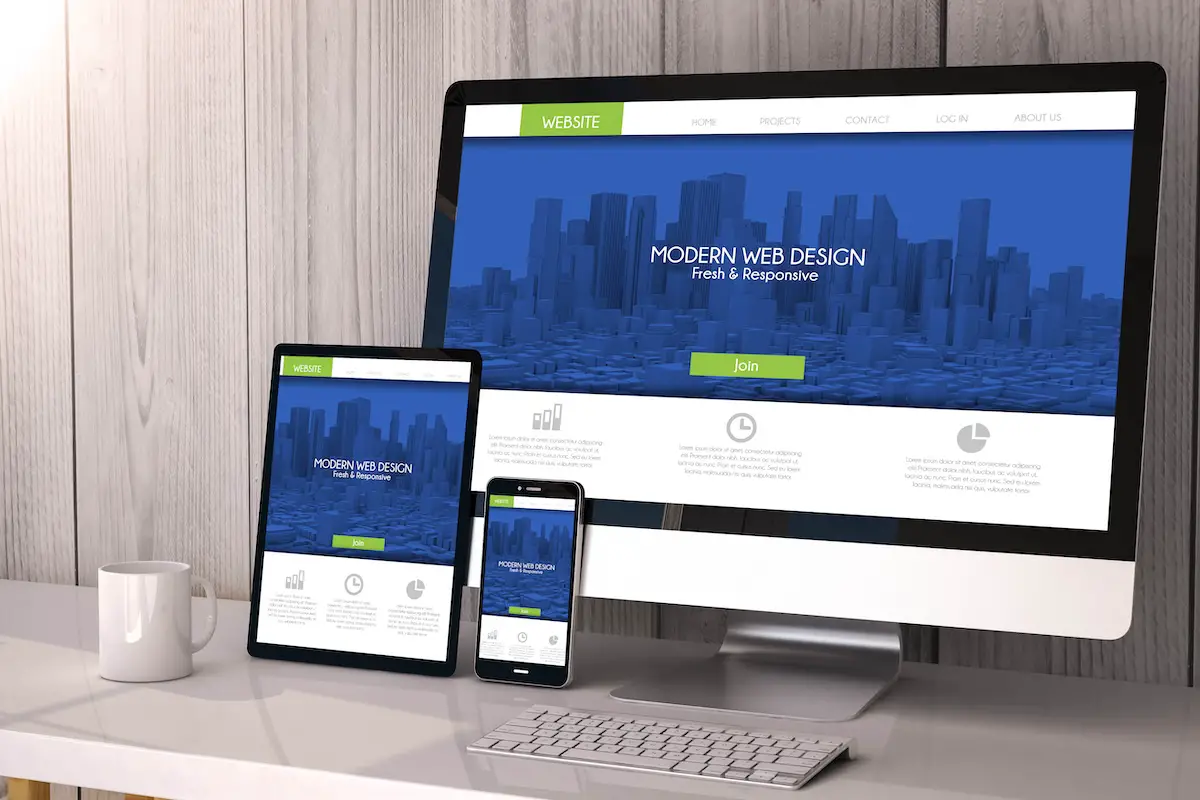Crafting an Engaging Web Experience: Innovative Design Strategies

Estimated reading time: 5 minutes
Table of contents
Key Takeaways
- Unpacking the essential elements of a digital identity that engages and converts.
- Exploring how strategic web design can facilitate user navigation and comfort.
- Underlining the value of SEO and content harmonization to amplify reach and influence.
- Emphasizing the crucial role of analytics in refining and enhancing web presence.
Encompassing Visual Appeal
An arresting visual design is the first step in captivating your audience. The subtle interplay of color, typography, and imagery can enthrall visitors, enticing them to delve deeper into your website. It’s about creating a harmonious environment where visuals are used judiciously to foster interest without overwhelming the senses. A compelling visual strategy focuses on establishing a clear brand identity, making navigational cues prominent, and using visual storytelling to enhance your brand’s narrative. The goal is not merely to create a beautiful website but also to project the ethos of your brand, communicate reliability, and bolster user engagement and trust.
Holistic Audience Understanding
To create a successful website, a custom web design agency must deeply understand its target audience’s preferences, needs, and web navigation habits. To achieve this level of experience, extensive market research and data analysis is required. This process allows the agency to create explicit user personas to be the foundation of the website’s design, content, and user experience strategy. Considering these differences, a custom web design agency like Avenue 25 can create tailored experiences catering to each visitor group’s specific expectations, challenges, and behaviors. This results in greater engagement and higher conversion rates. For instance, millennials might have different expectations for aesthetic and functional design than baby boomers or Gen Z.
SEE ALSO: 8 Tips for Using Videos Can Engage Your Audience
Strategic Color Implementation
The colors used in a website’s design serve as a silent communicator, with each shade carrying its psychological impact, influencing the viewer’s response. In web design Phoenix, a practical color strategy extends beyond mere aesthetics; it is essential for setting the right mood, guiding user attention, and enhancing brand recognition. Strategic color choices are crucial, especially in making key elements like calls to action pop, ensuring they catch the viewer’s eye at the right moment.
Intuitive Navigation
Highly intuitive and user-friendly navigation is at the heart of a well-designed website. A logical and well-thought-out navigational structure allows quick and easy information retrieval, enhancing the user experience and facilitating conversions. This could be achieved through a clean and organized layout, a prominent and fixed navigation bar, well-categorized menu items, and a search feature that allows users to bypass the navigation for direct access to their desired content. The objective is simple: visitors should feel guided and at ease when browsing, finding the content they need with minimal effort and time.
Embracing Mobile-First Design
Optimizing a website for mobile devices is crucial in today’s world. Using responsive design, a site can provide a consistent and functional experience on all devices. It’s not just about shrinking content to fit smaller screens; it involves rethinking the design to ensure that features, text, and interactions remain intuitive and satisfying on touch-based devices. Sites that cater to mobile users often receive improved search engine rankings. Therefore, a mobile-first approach is more about meeting user expectations than search engine optimization.
Content That Resonates
Engaging and retaining visitors is crucial for your website, and content is the voice that accomplishes this. Engaging and retaining visitors is vital for your website, and content is the voice that accomplishes this. Quality content communicates your expertise, showcases your products or services, and establishes trust with your audience. Whether through blog posts, product descriptions, or informational content, delivering value and relevance is critical to keeping users on the site longer, reducing bounce rates, and encouraging repeat visits. However, creating content that resonates goes beyond just what is written. It involves understanding the nuances of tone, the readability of text, and how it meshes with the overall design to support a coherent and compelling brand narrative.
SEE ALSO: 8 Secret Tips to Improve Your Business Website Usability
Fundamentals of SEO
Investing in SEO is a strategic way to improve website visibility and traffic. It encompasses a range of tactics, from keyword research and inclusion to crafting meta tags that accurately describe page content to optimizing the website’s technical backbone for fast loading times and mobile compatibility.
Leveraging Multimedia Elements
Using multimedia elements enhances a website’s aesthetic appeal and helps deliver complex information in a digestible format. Visual appeal is crucial, as it directly influences engagement rates and users’ time on the site. When used correctly, multimedia appeals to viewers’ broader sensibilities, catering to a more extensive array of learning styles and preferences.
Optimizing with Analytics
The beauty of digital marketing is in its measurability and the ability to gauge the effectiveness of your website design and content. Analytic tools allow you to scrutinize everything from user demographics to behavior patterns, providing actionable insights into what works and doesn’t. By understanding where users are dropping off, which pages are most visited, and what content performs best, you can continually iterate and improve the user experience. This data-driven approach moves beyond mere speculation, providing a granular view of performance that supports informed decision-making and strategic enhancements to your digital presence.








